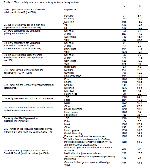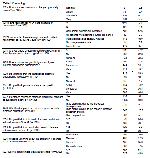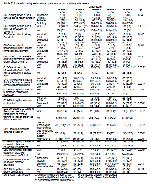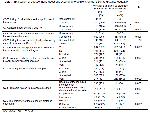This survey study provides information about the awareness of dental students related to COVID-19 outbreak, which has been spreading in our country since March 2020, and sheds light on making necessary measures and arrangements for the education of students as soon as possible.
Dentistry is one of the professions where the problems are felt exceedingly due to the pandemic. Dental practices increase risk of coronavirus transmission because of aerosol generating procedures and close distance working within confined areas. This risk increases and is of high importance especially when the patients are mildly symptomatic or asymptomatic. Concerning that dental healthcare professionals are at high risk, Chan et al. 8 reported that 29% of COVID-19 patients hospitalized were healthcare professionals. Therefore, dentists and dental students should be very careful and strictly implement the measures to protect against COVID-19 such as hand hygiene, use of personal protective equipment, and application of procedures to prevent cross-infection. Unfortunately, knowledge and awareness of dental health care workers on blood-borne diseases were reported to be insufficient 9. In order to control the spread of the virus, awareness and attitudes of dental students, future candidates of healthcare staff, should be determined and developed in terms of COVID-19 and possible outbreaks that may occur thereafter.
While 78% of our participants stated that their knowledge level about COVID-19 was sufficient and comprehensive, their answers regarding the 3 most important clinical signs of the virus and the most important measures to be taken indicated that their level of knowledge was sufficient. The students' responses to howmuch their daily routine was affected by the virus and how their plans have changed can be interpreted as high awareness. In order to obtain the most accurate and reliable information, it is extremely important to get information only from official institutions. The majority of our participants (93.6%) reported that they obtained information about COVID-19 from official institutions such as the Ministry of Health, WHO, and professional organizations.
Almost all dental students participated in our study thought that the pandemic was a serious public health problem. In a study conducted with dentists, it was reported that dentists who were worried about being infected with COVID-19 were over 90% and those who were concerned about carrying the virus to their families were above 95% 10. In our study it was seen that dental students have the same concerns as graduated dentists. A study conducted in Turkey reported that both clinical and preclinical students were afraid of infecting themselves and their relatives with COVID-19, with a higher proportion of preclinical students than the others 11. A recent study reported that the students were only moderately worried about being infected and the virus keeping on spreading 12. However, when dental and non-dental students were compared, dental students were more worried than the others. This result involves a very significant message that dental schools should implement cautions for the safety of dental students.
On the other hand, one of the measures applied to manage the pandemic was the closure of schools, as in previous outbreaks 5,13,14. It is estimated that almost 107 countries had decided to close the schools on March 18, 2020 and dental students were affected nearly worldwide 15. In Turkey, the distance education model was put into practice in order to manage the process effectively and to relieve the students. However, it is thought that this situation may cause many negativities 16. It is anticipated that dental education which is based on clinical practices, will have some problems with the distance education system, and that dental students will have less professional knowledge and experience compared to formal education. Besides, there is a concern that the risk of transmission of the virus to the students and their immediate environment will increase when formal education is initiated.
The fear of being infected with COVID-19 if formal education is started back, the rate of thinking that they were in the high-risk group and the rate of thinking that distance education was necessary were found to be higher among 4th and 5th-grade students than the 1st, 2nd and 3rd grades. We think that this difference is due to the fact that the practical training of the 4th and 5th-grade students is on the patient. It was seen that the students' belief that faculties could prevent virus transmission was extremely low with 9.3%. Although infection prevention and control strategies are part of our training, they should now be included more effectively in the dentistry curriculum. We need to improve existing infection prevention and control strategies to combat possible similar infectious diseases in the future. We should be aware of the infectious hazards that can increase the risk of contamination, especially during dental practice. Besides, students may be mentally affected by the fear of becoming infected, so dental schools should also provide psychological support to those in need. Efficient communication and sharing information are essential to alleviate the fears of students, academic members, staff, and even patients. We need to manage the issues of reorganizing classes, caring for patients, fear of infection, and providing the clinical requirements for graduation. Effective changes in teaching and learning methods are essential to ensure continuity of education, and temporary protocols and policies should be implemented to keep everyone safe.
Although it was showed that there was no significant difference regarding student performance between online and on-site learning 17, Amir et al. 18 indicated that more students felt lower learning satisfaction and more difficulty in communication both with trainers and their peers during online learning. A study conducted in Pakistan reported that approximately 77% of the students had negative perceptions of online learning 19. In another study, it was found that students experienced increased levels of stress and felt their clinical education has suffered 20. According to Hattar et al. 21, 87% of students defined the most negatively affected experience as clinical training. They relatively appreciated the online system, but did not think it could replace face-to-face clinical practice. Similarly, Chang et al. 22 stated that online learning was found practicable for both dental and non-dental students, but not for courses with laboratory formats 12. A recent multinational study which evaluated the effects of online courses reported that dental school students preferred blended learning and thought it had better learning efficiency 22.
While 63.5% of our participants stated that theoretical courses given in distance education system were sufficient, only 9.8% of them stated that practical courses were. The rate of thinking that distance theoretical courses were sufficient was found higher among 4th and 5th-grade students. We think that this difference is due to the fact that 4th and 5th-grade students have already completed most of their theoretical education with formal education. While aproximately half of the participants thought that remote exams were reliable, the other half thought otherwise. For the reliability problem of the distance exams, homework can be given instead of the exams. In this context, it is considered important to find alternative methods to distance education. After a certain level of vaccination, the relevant curriculum can be changed and/or updated 23. It was reported by 90% of our participants that they would not suspend their education if this process is prolonged, although there are negative points about distance education. The rate of thinking to suspend was significantly lower especially among 5th-grade students. We think that this is due to economic reasons and students' worry about wasting time. In parallel with these data, the necessity of the distance education model seems acceptable by 70% of students. The vast majority of students (over 90%) think that their practical training is disrupted due to the pandemic. In the future, students' shortcomings can be eliminated with an accelerated program, but the uncertainty of the pandemic process may prevent this.
Distance education model has been reported to cause some problems in the literature 5,16. Although 53% of our participants stated that they did not experience any difficulties regarding distance education, 47% reported that they had problems due to technological deficiencies and the school's distance education system. Similarly, in a study conducted in China, where the COVID-19 pandemic broke out, it was reported that university students experienced anxiety in this process due to being in the countryside and uncertainty in the level of family income (24). Students living in rural areas without internet access need to be supported by universities in order to receive equal education with others 23. The distance education infrastructure can be improved, and opportunities can be created for students with limited internet access. Exam system, homework presentation and grading policies should be rearranged in a way that does not cause anxiety among students. For many faculties, the digital tools, technical infrastructure, academic members' technology integration levels and ability of distance education management should be improved. The success of digital learning depends on lecturers interactive teaching styles and attitudes, as well as students' technology-related experience and behavior. Faculty management should do what is necessary to increase the adequacy of the faculty, set priority objectives, and rearrange the course materials related to distance education. For laboratory courses, blended learning or virtual reality education may be considered.
Although the survey was applied to 1310 students in 7 dental faculties, the limitation of this study is that it did not reflect the opinions of dental students from all over the country. Furthermore, it would also be useful to compare educational outcomes with those of previous years while making plans for the future.
Currently, challenges related to dental education remain as an important issue to be managed during this pandemic. Dental schools urgently need to improve their education policies and protocols and develop an emergency plan to maintain practical training safely as well as to combat against possible future pandemics. The level of sufficiency based education should be appraised, different kinds of distance learning implementations should be permanently included in the curriculum. Investment should be made to use virtual technologies such as haptic technology and augmented reality especially in practical applications. Although COVID-19 has brought new challenges in education, the results of this study shows that most students appear comfortable with technology and favor taking protective measures. A combination of online and physical classes, named blended learning, seems to be the future trend for dental education as we experience the new normal.
Conflict of Interest: The authors declare there is no conflict of interest.
Funding: There is no funding
Acknowledgments: The authors wish to extend their gratitude to all participants for taking part in this survey. They also thank Dr Neslihan Arhun (Başkent University, Faculty of Dentistry), Dr Pınar Çevik (Gazi University, Faculty of Dentistry) and Dr Gülbike Demirel (Ankara University, Faculty of Dentistry) for their helpful support on communicating with dental students.






